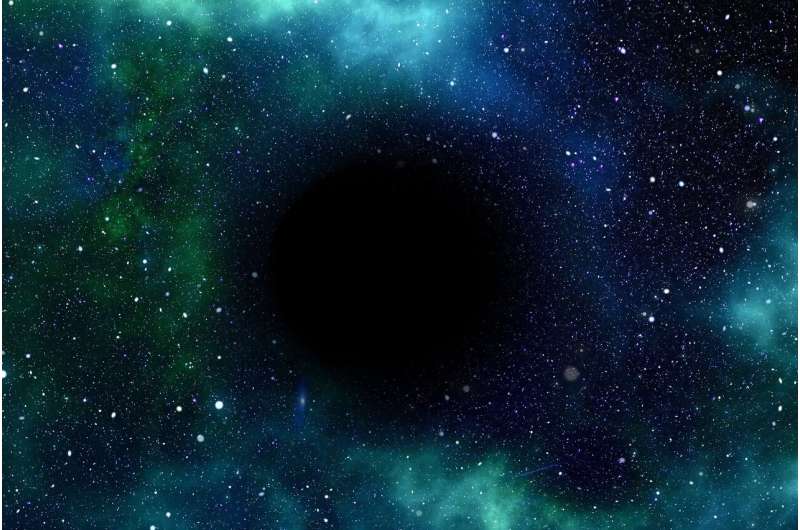Astrophysicists construct approximations for the metric of spherically symmetric black holes

RUDN astrophysicists have proposed a new method for approximate calculation of the parameters of spherically symmetric black holes in the Einstein-Maxwell theory. By comparing the shadow radii of the black holes obtained via this method with exact numerical solutions, astrophysicists have revealed that the approximation they suggested shows a reasonable accuracy in the second order. This means that it is possible to study the black holes themselves and the phenomena in their vicinity, for example, particle motion. The article is published in the journal Physical Review D.
The problem of obtaining an analytical approximation for the black hole metric in the Einstein-Maxwell scalar theory has not been solved in the general case when none of the parameters is fixed. But it is possible to construct an analytical approximation of the metric with controlled accuracy to obtain the results that coincide with the numerical solutions. There is a general approach to approximation, the improvement of which continues within various models.
RUDN astrophysicist Roman Konoplya analyzed the case of a spherically symmetric black hole in the Einstein-Maxwell theory. Assuming a non-minimal interaction between the scalar and electromagnetic fields, the prohibitions on the existence of scalar "hairs" in black holes are lifted, and the so-called spontaneous scalarization of black holes occurs with a sufficiently large charge of the black hole. Physicists usually say that a black hole "has no hair," meaning its only distinguishing parameters are its mass, spin and electric charge. But in this case, the black hole has an additional parameter—a scalar "hair."
The analytical approximations obtained by RUDN astrophysicist were used to calculate the "shadows" cast by black holes with a scalar field. It turned out that the inclusion of a scalar field increases the radius of the shadow.
The results of the astrophysicists' study make it possible to find the analytical forms of approximate metric functions for any desired parameter values, as well as to calculate the radius of the shadows for each specific black hole.
According to the authors of the article, the obtained approximations are ready to be used for the further study of scalarized Einstein-Maxwell black holes and phenomena in their vicinity, such as particle motion, quasinormal ring, stability.
When the LISA telescope comes into operation, the scalar "hair" can be seen in gravitational waves if the black hole has "hair" due to some (scalar or other) non-minimally interacting fields of matter. However, according to the astrophysicist, this is not about the near future, since in all such measurements of gravitational waves the struggle for the signal-to-noise ratio does not yet allow one to notice relatively small changes in the geometry of compact objects.
More information: R. A. Konoplya et al. Analytical representation for metrics of scalarized Einstein-Maxwell black holes and their shadows, Physical Review D (2019). DOI: 10.1103/PhysRevD.100.044015
Journal information: Physical Review D
Provided by RUDN University





















